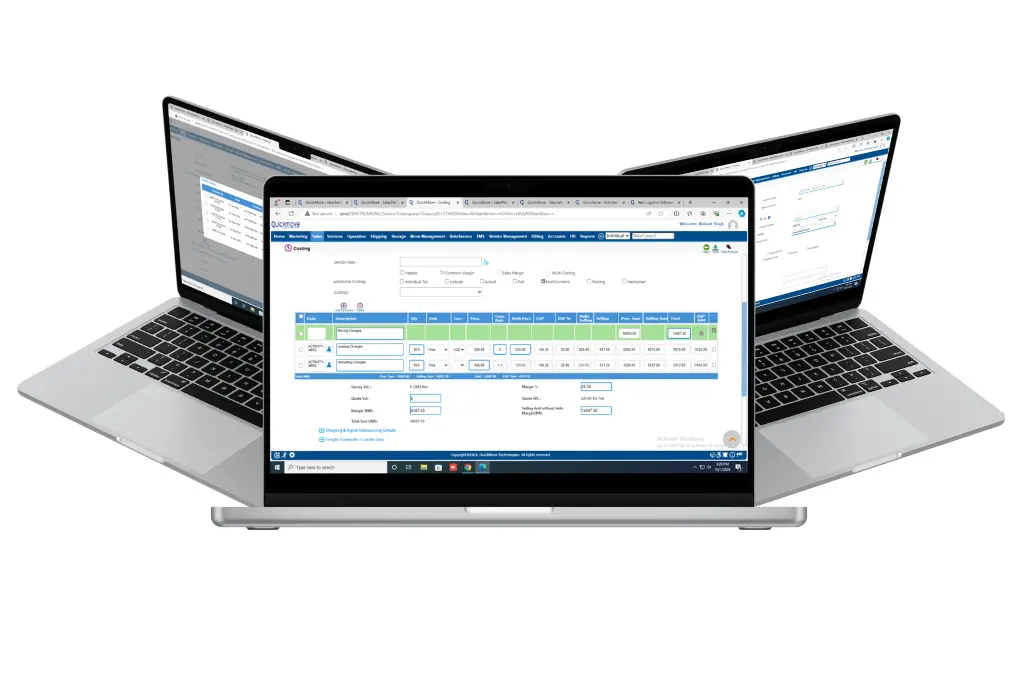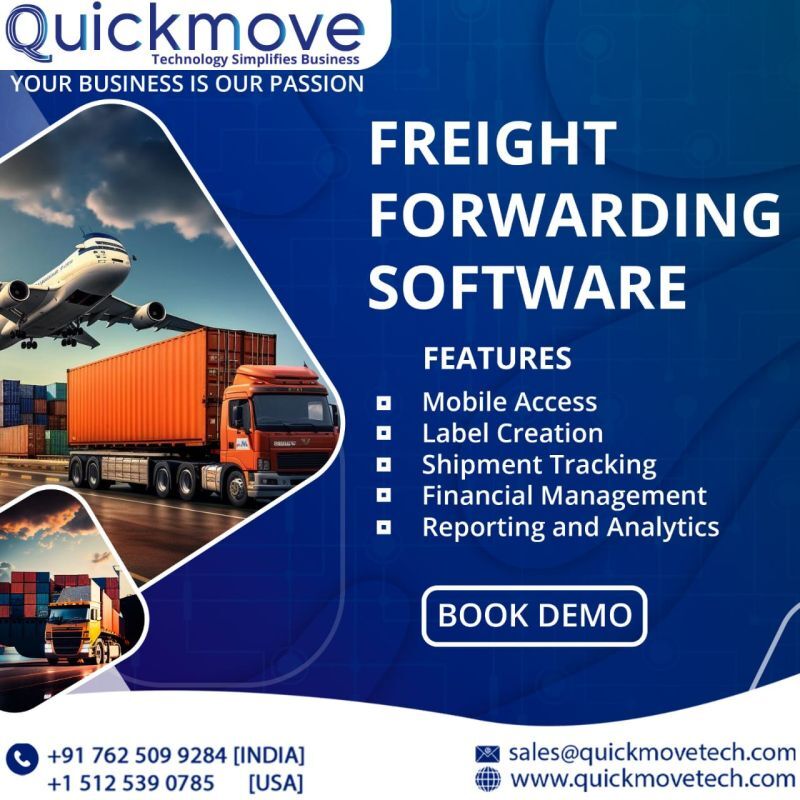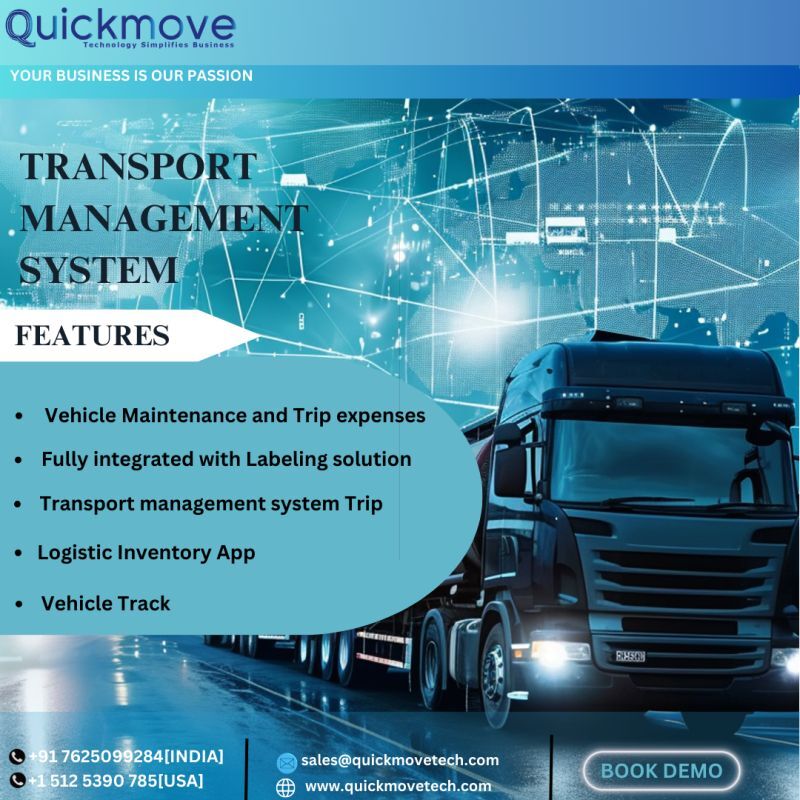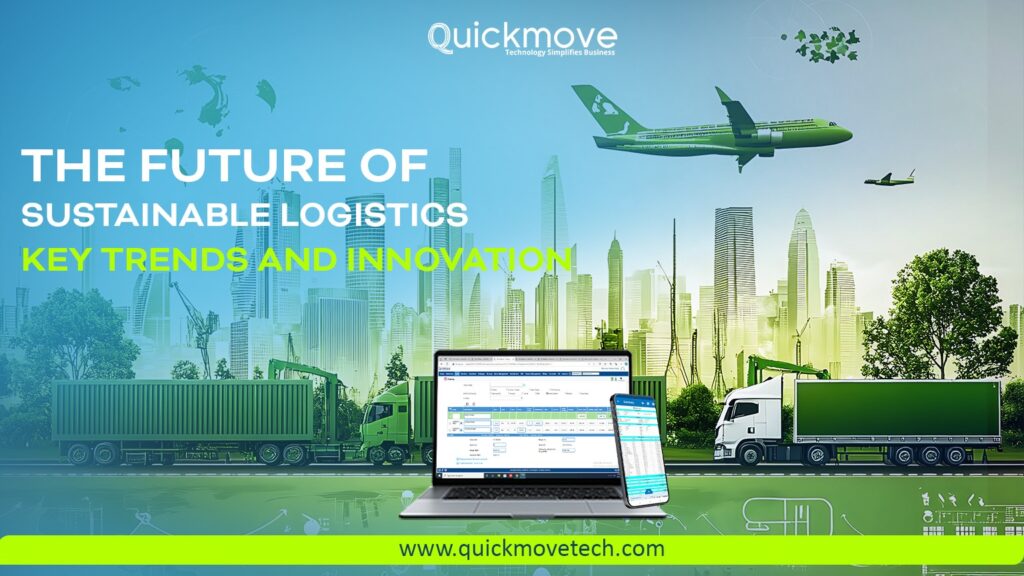Transportation Management Software is a lifesaver for any business that manufactures real goods. It’s frightening to consider what people did without such venues half a century ago. Yes, there were already fast enough methods for data transport. Even yet, all of this information had to be collected, saved, and analyzed manually, which took a long time, was costly, and was not always reliable. We can now gather, process, and distribute transportation data to any employee automatically. It enables businesses to be more efficient than ever before in terms of product creation and delivery.
What Is Transportation Management Software?
Transportation Management Software assists businesses in improving product transportation operations from manufacture to the end customer. These improvements are made possible by optimizing the company’s organisation and processes, vehicle tracking transparency, route optimization, data collection and analysis from vehicles and customer devices, and many other variables that, rather than being hidden, become apparent, traceable, and predictable for you. Let’s take a closer look at TMS and what it can do for a business.
What is the Process of Using Transportation Management Software?
It’s not difficult to imagine how everything works at the hardware level. Each vehicle has a maximum number of sensors and a modem that sends data from the sensors to the TMS server. This enables you to establish a variety of parameters, such as the location of the vehicle and the state of its components and transported items, as well as weather conditions, traffic, and feedback from transportation hubs and end customers.
All of this information is priceless to data analysts and software platforms that help collect and analyze data in order to improve corporate processes. As a result, companies who do not have and use this data may be missing out on a lot. Let’s look at some examples of how businesses use TMS and how they don’t.
Production
Everything starts with the production’s internal transportation. So you’ll need an entire logistics department to contact shippers and brokers, negotiate delivery, make sure early plans are up to date, make sure necessary transportation is accessible, and so on. Maintaining such personnel costs a lot of money, and manually conducting and coordinating all logistical tasks takes a lot of time.
TMS-using companies have no such issues. Transportation asset management software assists in obtaining a complete view of a vehicle’s availability, load, and other information. This information is updated automatically and is accessible at any time. You don’t need to invest additional time or money on an entire team of employees to manually check and manage everything.
Customer Support
Companies that do not employ TMS have fewer options when it comes to offering excellent customer service. They’ll need a complete team of customer service reps to deliver information, troubleshoot problems, collect comments, and so on.
When a business employs a TMS, it’s more than just a software platform for managing data from vendors, transportation, and other sources. Customers will be able to access real-time information on order status, delivery, and other facts through the company’s platform. By automating the gathering and analysis of critical user data, it is feasible to considerably reduce customer support workers and make their work far more efficient.
Carrier
The state of the vehicles must be checked on a regular basis by a separate team of professionals, which will make the vehicles unavailable for usage at all times. You can’t plan for these situations if you don’t own the automobiles and instead rent them.
Using a TMS makes these processes easier in both scenarios. By delivering sensor data on a continuous basis, you can predict when vehicle inspections and repairs are required, saving downtime and unexpected breakdowns. It’s also possible to reduce the number of people needed to do this. The company saves a lot of time and money as a result of all of this.
What Makes Transportation Management Software So Important?
TMS may appear to be only necessary for large firms with a large workforce, very complicated procedures, and a desire to cut a significant amount of unnecessary spending. QuickMove provides software and mobile app solutions for clients using TMS. This is the preferred method of delivery for both huge worldwide corporations and small local businesses.
As a result, TMS optimizes, automates, and improves a wide range of processes for businesses of all kinds, including those with limited budgets and no need for excessive spending. Let’s have a look at some of the main advantages of using a TMS.
Advantages Of TMS
Customer Service
The customer experience will vastly improve. Users will receive answers to any questions they may have without needing to contact you. They can connect onto the app at any moment to get detailed information on the progress of their order or parcel.
Transparency in Operations
For each team member with authorized platform access, all transportation and related operations will be transparent. A large quantity of data on the state and location of transportation, as well as the availability of suppliers and routes, will be updated in real time and accessible at any time in an easy and understandable manner.
Structure of the Business
To manage your organisation efficiently, you’ll need considerably fewer professionals. Furthermore, some processes will not necessitate any direct participation. You’ll save money and time while maintaining the highest possible level of quality.
Scalability and Business Analytics
You’ll be able to pull data from users, equipment, shipping hubs, and other logistical operations, and use it in ways you couldn’t before. You’ll be able to do a much more thorough analysis and establish stronger long-term plans, as well as identify answers to emergency problems much more quickly.
Transportation Management Software Core Capabilities
Advanced logistical capabilities are required by mature enterprises with various partners. A Cloud-based transportation software is a more comprehensive option than a standalone TMS.
Steps to Choose Transportation Management System Software for Your Business
The steps to selecting the best TMS for you are outlined here.
1. Gathering Information System Needs
Gather information system needs, which must include the business customer.
2. Preliminary Market Analysis
A preliminary market analysis based on reports from independent research firms and other publicly available data.
3. Request for Bids
A request for bids is issued. Following the watching of the presentations, the selected candidates are asked to submit an individual full-fledged business proposal. As a result, bids with budget estimates and project timelines have been obtained.
4. Contract Terms Negotiation
Contract terms are negotiated with suppliers and partners. They must all be able to easily interact with the implemented solution. As a result, you’ll have enough information to make an informed conclusion.
5. Final Decision
If the proposed solution meets all of your needs and those of all other players in your firm, you’ve arrived at the optimal solution. As a result, the product was purchased, and the implementation process began.
 Email Us
Email Us

 Freight Forwarding Software
Freight Forwarding Software Moving/Removal Software
Moving/Removal Software Warehouse Management System
Warehouse Management System Transport Management System
Transport Management System Customer Service Portal
Customer Service Portal Move Survey Quote Pro
Move Survey Quote Pro Digital Logistics Inventory App
Digital Logistics Inventory App

